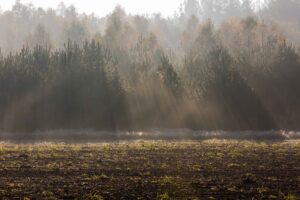An understanding of conservation easements is important for anyone considering owning land for real estate purposes. A conservation easement is a voluntary legal agreement between a landowner and a land trust or government agency that permanently limits uses of the land in order to protect its conservation values. Conservation easements are one of the most powerful tools available to landowners for protecting their land from development.
The most common reason is to prevent the land from being developed or subdivided in the future.
This is often done to preserve the land’s natural state, or to protect it from being developed in a way that would damage its conservation values. Other reasons for placing a conservation easement on land include preventing the land from being used for mining or logging. This could protect historical or archaeological sites, or preserve open space for public recreation.
Conservation easements are permanent, legally-binding agreements between a landowner and a land trust or government agency. The agreement limits the uses of the land in order to protect its conservation values. Once a conservation easement is in place, it is permanently binding on all future owners of the land. This means that you can continue to protect the land even if it is sold or passed down to future generations.
There are a few things to keep in mind if you are considering placing a conservation easement on your land.
- Understand that a conservation easement is a voluntary agreement. This means that you are not required to place a conservation easement on your land, and you can withdraw your agreement at any time. However, once a conservation easement is in place, it is permanent and cannot be removed.
- Know the different types of conservation easements and how they can be used to protect your land. There are two main types of conservation easements: development easements and conservation easements. Development easements are typically used to prevent the land from being developed or subdivided in the future. Conservation easements, on the other hand, are typically used to protect the land from being developed in a way that would damage its conservation values.
- Consult with a qualified professional before placing a conservation easement on your land. A qualified professional can help you determine whether a conservation easement is the right tool for protecting your land. They can also help you navigate the process of creating and enforcing a conservation easement.
Conservation easements are a powerful tool for landowners who wish to protect their land from development. By understanding the different types of conservation easements and how they can be used, landowners can make informed decisions about how to best protect their land.





